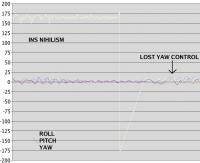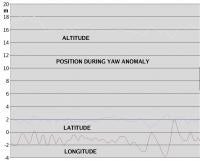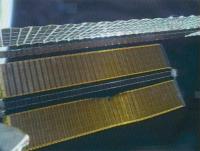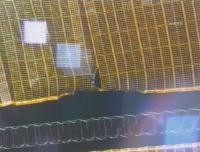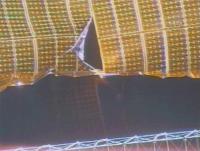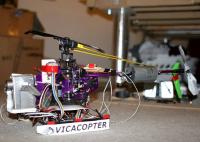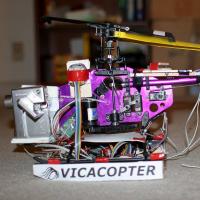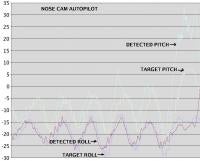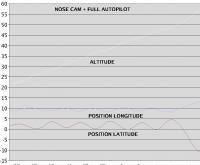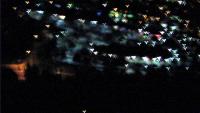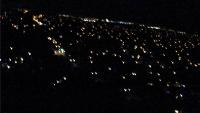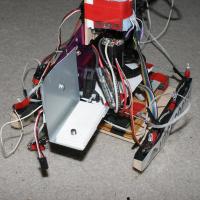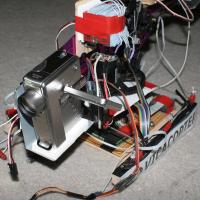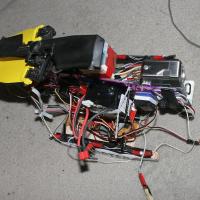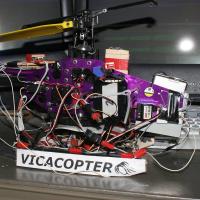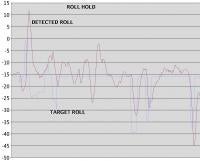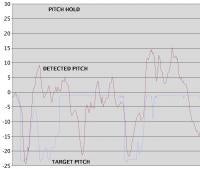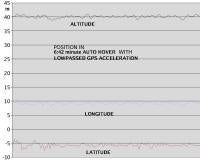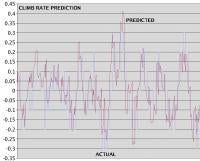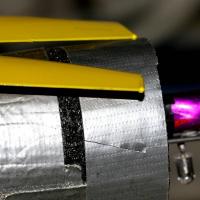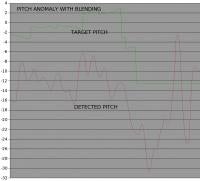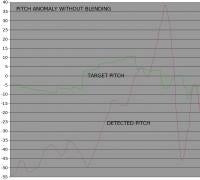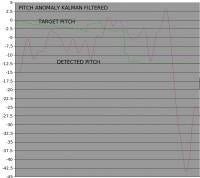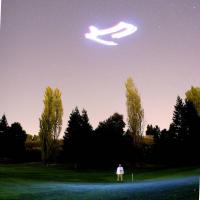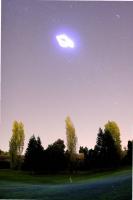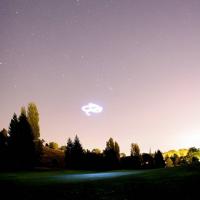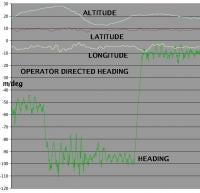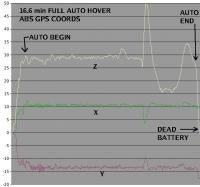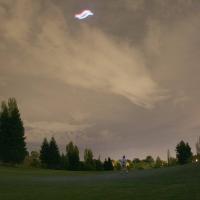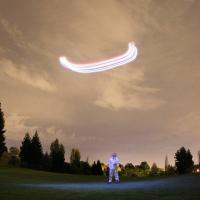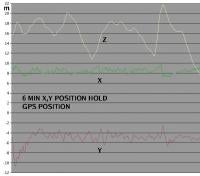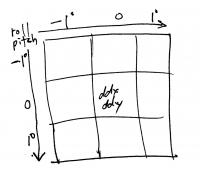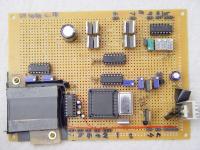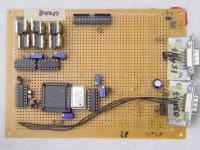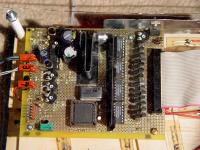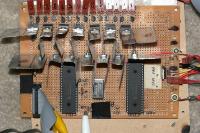Posted by Jack Crossfire |
Oct 31, 2007 @ 03:20 AM | 6,888 Views
The wind finally stabilized enough to get HD in the air under autopilot control. This time the autopilot managed to zero in on a stable orientation. She managed a small tail rotor pan before the INS lost it. Unfortunately, vibration is still outrageous. Vibration aside, video is remarkably stable when autopilot works.
INS after 180' turns is falling over again. It seems to stop detecting yaw at all, maybe gimbal lock. It makes it very hard to do our preferred takeoff upwind and photograph useful subjects downwind.
The latest neural network is world class. Instead of correlating detected tilt with acceleration it correlates commanded tilt with acceleration. Predictions are a little farther ahead.
Something we're avoiding is the next step in neural networks. To improve aerodynamic simulation, the neural network needs to have more hard coded assumptions. Those assumptions are aeleron affecting sideways motion & greater angles causing more starboard acceleration. The current assumption is some combination of cyclic controls some combination of acceleration.
Posted by Jack Crossfire |
Oct 30, 2007 @ 12:28 PM | 7,156 Views
It didn't make the news so here it is. Things aren't going so well in space. After shutting down half the solar panels due to a broken rotary joint, one of the remaining solar panels was destroyed during redeployment. There's no way for astronauts to repair the damage and no budget for spare solar panels.
Even if nothing else breaks, the space station can only be 1/2 as functional as intended. When finished, they'll have to power cycle the modules to conserve power and can expect only 1/2 the original science output. From the broken solar panels to the worthless orbit, this $100 billion toy is a true disaster.
Russians knew how to build space stations. Should never have let the united meltdown get involved.
Posted by Jack Crossfire |
Oct 30, 2007 @ 02:34 AM | 6,938 Views
The flight control software is about as good as it can get. It actually damped out oscillations between 2 windy periods. Wind is hopeless.
So does more weight from a camera improve wind resistance? Of course not. Either it's a PID tuning matter or some aerodynamic mystery.
Posted by Jack Crossfire |
Oct 29, 2007 @ 02:52 AM | 7,101 Views
So the reason auto hover stopped working with the ADXRS150's was the A/D converter Vmax being 3.3V. Recall Vmax=3.3V put the gyro centers up at 48000. Once set to 5V, the centers were 32000 and auto hover returned. Either the PIC A/D converter is not linear or the gyros have lots of 5V transients which don't show up in flight recordings.
Unfortunately, now the ADXL330 isn't as precise at Vmax=5. There isn't enough payload capacity to have op-amps converting all the different sensor voltages.
Vicacopter has benefited from the ADXRS150's lack of drift, but the total attitude drift is still identical to the IDG300's. Attitude drift is still limited by sampling rate & manufacturing errors. Would not have bought the ADXRS150's after already having the IDG300's. If U have no gyros yet, then by all means, buy MLX90609 75deg/sec's and go purely digital. Avoid the IDG300's & analog sensors.
In terms of gyros improving wind resistance, forget it. The wind resistance clearly comes from faster GPS. Despite all these limitations, the software showed true brain power to pull off hovers using only 1Hz GPS & IDG300's.
Posted by Jack Crossfire |
Oct 28, 2007 @ 04:04 AM | 7,586 Views
Well, got acceleration from GPS subtracted out of acceleration from the accelerometer. That's supposed to eliminate the effect of position change on orientation sensing. In reality, U need the current orientation to subtract GPS acceleration from the accelerometer, a recursive dependancy.
We assume the orientation is pretty close to level and don't bother changing the GPS to copter frame. It seems to improve cyclic directed orientation.
The Kalman filter did this and it caused orientation to glitch. So much for that.
Starting to druel over the Ublox TIM module. These R the 4 Hz GPS modules that got Rotomotion going originally.
Now the bad news. Position hold hasn't worked since the ADXRS150's arrived. Goodnight everybody!
Posted by Jack Crossfire |
Oct 26, 2007 @ 05:19 AM | 7,210 Views
Still having malfunctions with the INS when pointing South. The ADXRS150's are doing much better than the IDG300's. With an algorithm 2 increase accelerometer weight when the gyros saturate or go back to higher accelerometer weight when under manual control, they could do even better.
Posted by Jack Crossfire |
Oct 25, 2007 @ 03:07 AM | 7,428 Views
The latest $220 of gyros arrived. Because the gyros run on 5V and the accelerometers are still stuck to 3.3V, we have the A/D input clipping at 3.3V, providing only 70 deg/sec of real range. Even then, we seem 2 have enough range. Should have probably used 75 deg/sec gyros.
In other news, Vicacopter's TV appearance finally appeared. While there's an HD copy on the hard drive, all U get is the Goo Tube version.
Sort of funny that the station which taught U science finally put U on a show about science. Full circle, U might say.
It's the first time we had a decent cameraman to shoot pilot & copter flying. Since then, autonomous hover was achieved but in the winds of that day it still wouldn't work.
...Continue Reading
Posted by Jack Crossfire |
Oct 23, 2007 @ 12:35 PM | 7,497 Views
Flight #2 with nose cam had slightly less vibration. Added more padding and weighed down a flybar paddle. Need complete foam isolation from the fuselage. The camera still has a bolt link to the fuselage.
Full autopilot was enabled and completely ineffective. The PID loops would have 2 B retuned 2 handle a 9oz camera. With the significant battery drain, it would take a lot of recharges. The short flight times & need 4 retuning make autopilot for HD a waste.
One other thing. Vicacopter is on KQED tomorrow nite at 8.
Posted by Jack Crossfire |
Oct 22, 2007 @ 03:58 AM | 7,230 Views
It was time to fly the Canon TX1, finally. Figured out an ingenious way to mount the camera on the nose, shifting components starboard and aft to balance it, fabricating a sheet metal angle to tilt it. the Autopilot was in attitude directed mode. The pilot controls target attitude.
The result was horrible vibration. At least she easily lifted the electronics and the camera.
With the extra 1.25" for electronics, a skid cam is more challenging. It's more like a pendulum. Been leaning towards doing it out of foam.
Recall 8 months were focused on holding orientation. Then we got orientation stable enough to work on holding position. Wanting more wind resistance, it's time to look at orientation hold again. Obviously this chapter isn't over. Even flying in directed orientation mode, it is easy 2 lose control as orientation drifts and autopilot searches for the target orientation.
Anecdotes lead to faster servos & smarter algorithms being required for better orientation. There's patent 6751529 on neural networks for orientation and some notes from Trammel Hudson on requiring faster servos
http://robots.net/person/hudson/
Blocked by patents and lack of money, may end up with an assisted autopilot. The autopilot controls most aspects, but can be assisted by human input when it loses control.
BTW, Neural Robotics uses a 10Hz WAAS corrected GPS from Novatel. Vicacopter's no-wind hover is probably the limit of what 1Hz GPS + this size airframe can do.
Posted by Jack Crossfire |
Oct 20, 2007 @ 08:57 PM | 7,147 Views
In continuing autopilot tests, have more lousy experience with wind sheer.
The Aiptek finally got mounted and all the electronics strapped together. Seems to lack high enough shutter speeds to handle copter motion.
Posted by Jack Crossfire |
Oct 19, 2007 @ 12:53 PM | 7,406 Views
Light wind returned, so we can pass more test flights.
The altitude anomaly was fixed. Only lucky timing jitter between GPS & INS readings kept it working before. Still pretty worthless in wind.
Amplifying the neural network predictions is required for flight. Straight predictions won't do it.
We're at the limit of servo feedback with these gyros. More servo feedback to handle wind is too unstable.
GPS acceleration is now lowpass filtered. It seems like it should improve results. Climb rate prediction in the desired range of velocities seems pretty worthless but manages 2 B just enough. Climb rate prediction is back to pure GPS, no accelerometer.
Finally was reliable enough 2 get video of an auto hover. The area for videography is particularly hard for autopilot. Seems 2 B a lot of wind in this area. Stabilization off camera concieled just how bad position hold was, but she retained control.
Drift with the IMU and time needed to train the neural network combine to make success very hard. It usually takes a few tries before it works.
$225 vaporized. Moving on to better gyros. No inventory at Gumstix. The signs are pointing to better results being achieved from physics simulation in flight. Given current velocity, orientation, energy input, predict future velocity. The role of neural networks would shift to detecting wind or predicting energy conversion.
Posted by Jack Crossfire |
Oct 18, 2007 @ 05:01 PM | 7,410 Views
So the most challenging flu in 10 years has caused 7 days of declining health. Today we have Blue Angels footage.
And the F-16 footage with better audio.
...Continue Reading
Posted by Jack Crossfire |
Oct 16, 2007 @ 12:14 PM | 7,462 Views
Not naming any countries, but with high winds expected until November, the focus is now improved altitude hold with manual position hold. Finally broke down and implemented a cyclic -> target attitude function. The cyclic controls the target attitude instead of the servos.
Holy shoot that's hard 2 fly. This provides enourmous stabilization for video in high wind but with the delay and lack of deflection, it's a miracle the computer can fly at all. The effect of wind hitting under the blades is now known. Wind hitting under the blades fools the accelerometer into thinking she's less level than she is and steepens the angle of attack away from the wind.
In wind, the neural network is pretty worthless.
Posted by Jack Crossfire |
Oct 15, 2007 @ 03:46 PM | 7,394 Views
To determine what is most valuable in defeating high winds: better gyros or better attitude feedback, we have more data.
The Neural Robotics patent says attitude feedback is the most important factor in wind resistance. Using neural networks for attitude feedback is patented.
It seems we also have a gyro problem. High winds exert strong acceleration, which throw off our blended attitude estimate.
Posted by Jack Crossfire |
Oct 14, 2007 @ 03:58 AM | 7,355 Views
We've now locked out the controls in autopilot mode and are testing operator directed mode. Rudder controls heading. Cyclic controls position. The autopilot is immune to stick noise. The most dangerous part of this is switching back to manual mode. Where exactly was the throttle stick? Flight tests with operator directed mode are as expected, real sloppy.
The most important function in operator directed mode is heading, which she does at the expense of creating huge position oscillations. The neutral tilt has 2 B relearned when heading changes. We can't just rotate a global tilt to copter frame. Without air movement, the neutral tilt in copter frame is always -14' roll, -1' pitch.
Sensitivity 2 wind continues 2 B a problem. All success has been in no wind. Any wind and she loses control. Sudden altitude losses have been more common. We seem 2 have trouble determining vertical acceleration.
The biggest gain may not be an XBee, 600Mhz Gumstix, or new laptop, but better gyros. All roads lead to the gyro drift causing much of the oscillation. Exactly what gyros to get? 300 deg/sec, 150 deg/sec, 75 deg/sec ADXRS, MLX?
Posted by Jack Crossfire |
Oct 12, 2007 @ 12:22 PM | 7,040 Views
We did it. The hover barrier has finally been broken. After 10 months on the wagon train, finally achieved autonomous hover with full position hold. Hovered out the battery in fact. Considering how crummy the gyros are, how lousy and unstable the Corona is for autopilot, how crummy our non-Kalman filtered navigation is, and the country that made it, it really is a miracle.
Autopilot ran for 16min 39 sec with no human input of any kind. The battery safing kicked in and the throttle integral could no longer keep her aloft.
At 671 seconds, she had some kind of altitude malfunction, but managed to autonomously regain control of X/Y position.
Below a certain altitude, there is too much GPS noise and altitude hold is impossible. She doesn't seem stable enough for aerial photography. The 72Mhz transmitter hack is too sensitive to body movement for the pilot to look through a camera viewfinder or pose. Photographing autopilot in action is a matter of luck.
For climb rate prediction, the neural network uses accelerometer readings. GPS readings are used for horizontal prediction.
Posted by Jack Crossfire |
Oct 11, 2007 @ 12:28 PM | 6,680 Views
Well, couldn't get any good results from neural network tilt feedback, so focused on tuning the PID loops. Sure enough, position hold locked in. Once the integral terms built up, in no wind, she stayed within 2 meters of the target position for most of the 6 minute autopilot run. Deviations occurred when wind increased or throttle changed. In stable air, she held position perfectly.
Unforunately, increasing the performance looks like a matter of more expensive gyros & a bigger copter. In any altitude hold, throttle changes constantly.
Posted by Jack Crossfire |
Oct 10, 2007 @ 12:39 PM | 6,633 Views
The neural network training doesn't represent the full range of angles & accelerations well. It only trains on the most recent samples, regardless the range they happen 2 B in. Wouldn't it be nice to have angles in each range, regardless of time.
Tried using a table of most recent angle->accel slots in every range. The result of this was horrible. The correlation seems too erratic to derive from anything but the most recent samples, but it's an intriguing algorithm to keep around.
Now we have a strange phenomenon where more training iterations make the network less reliable.
With the rainy season underway and much more money on the airframe than last year, we're rained out indefinitely.
Posted by Jack Crossfire |
Oct 09, 2007 @ 07:11 PM | 6,641 Views
To make serious progress in altitude hold, need more clockcycles. 3 weeks and Gumstix is still out of stock. If only we could go back to the many days of 8 bit microprocessors.
Posted by Jack Crossfire |
Oct 08, 2007 @ 12:33 PM | 6,438 Views
After many tests with neural network guidance, we have 2 revelations.
A neutral tilt angle relative 2 when the INS is settled down must B hard coded. The INS drifts too much for locking the latest angle 2 work.
PID loops did a better job at feedback than neural networks. The neural network isn't hard coded with a neutral tilt angle. Seems 2 B that neutral tilt angle issue again.
This limitation conflicts with our need to adjust the neutral angle based on wind. Increasing the wind margins requires better gyros to reduce the drift. It could be $220 of gyros.
Now the F-16 footage from Saturday.
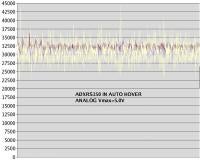 Views: 334
Views: 334 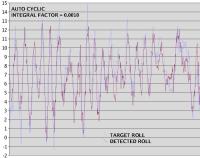 Views: 266
Views: 266 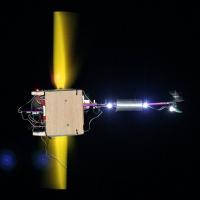 Views: 310
Views: 310 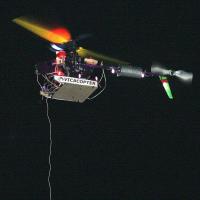 Views: 311
Views: 311 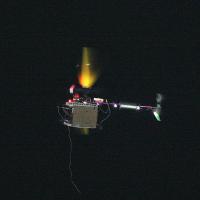 Views: 276
Views: 276  Views: 294
Views: 294 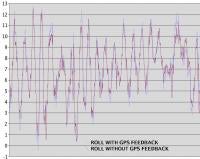 Views: 256
Views: 256 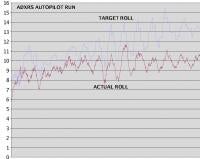 Views: 386
Views: 386  Views: 273
Views: 273 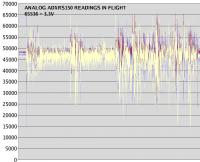 Views: 276
Views: 276 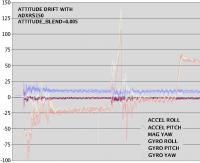 Views: 302
Views: 302 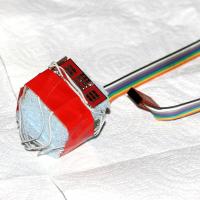 Views: 342
Views: 342 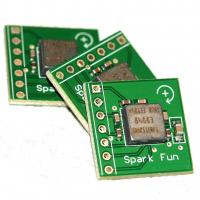 Views: 271
Views: 271 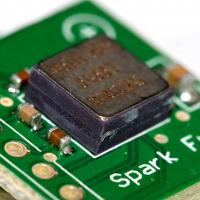 Views: 268
Views: 268 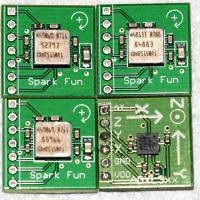 Views: 281
Views: 281  Views: 247
Views: 247 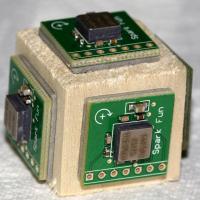 Views: 290
Views: 290 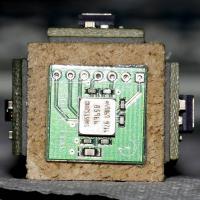 Views: 265
Views: 265  Views: 265
Views: 265 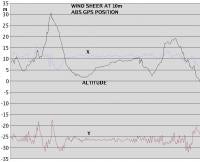 Views: 296
Views: 296 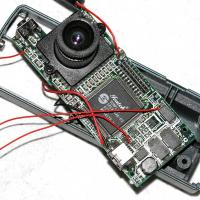 Views: 270
Views: 270 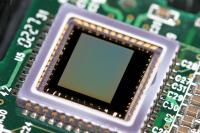 Views: 276
Views: 276 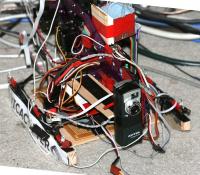 Views: 269
Views: 269 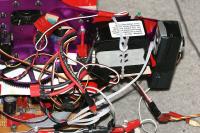 Views: 243
Views: 243 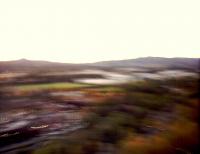 Views: 257
Views: 257 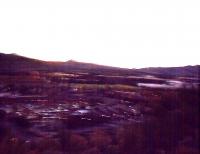 Views: 292
Views: 292 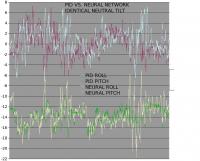 Views: 295
Views: 295 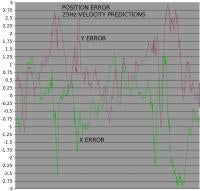 Views: 235
Views: 235 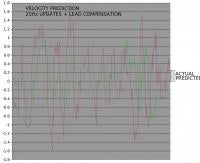 Views: 221
Views: 221 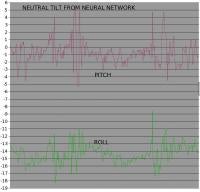 Views: 234
Views: 234 